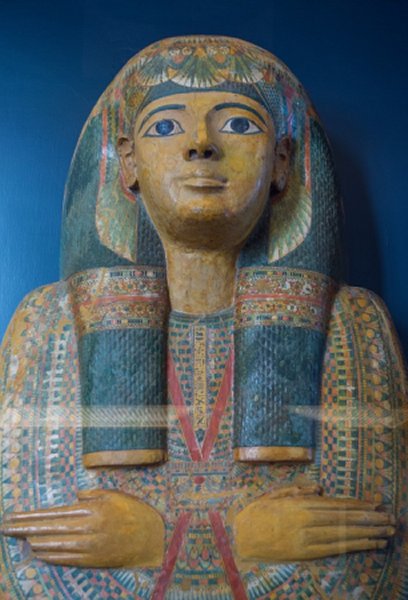Ancient Egyptians Knowledge Of Psychiatry – Importance Of The Sorcerer And The Mysterious Zar Dance
Ellen Lloyd - AncientPages.com - Ancient Egyptians were familiar with many branches of science. There is solid evidence they possessed advanced astronomical knowledge, mastered mathematics, and applied their expertise to monumental architecture.
Ancient people in the land of the pyramids were also acquainted with medicine thousands of years ago and could treat various diseases.
Credit: Public Domain
Ancient Egyptians knew much about prosthetic foot technology and produced functioning toe prostheses for amputated limbs more than 2,500 years ago. Many years ago, archaeologists made a sensational discovery when they found the 2600-year-old mummy of an Egyptian priest named Usermontu. X-ray revealed a metal screw near the kneecap of Usermontu. The metal screw connecting the mummy's thigh and lower leg naturally attracted worldwide attention because it was the first known example of ancient limb reattachment.
“Prehistoric physicians in Egypt had an impressive knowledge of the human body and its inner workings, as well as the treatment of illness and disease.
Egyptian medical papyri documented many diagnostics and medical achievements we still use today.” 1
In our modern society, we know that people may suffer from conditions that affect their thinking, feelings, mood, and behavior. These conditions can sometimes be severe and long-lasting to the individual and everyone in their surroundings.
Psychiatric disorders have existed as long as humanity, but were ancient civilizations familiar with mental illness?
Did Ancient Egyptians Recognize Psychiatric Disorders?
What did ancient Egyptians know about psychiatry and psychology? Did they recognize psychiatric disorders? If they did, how did they treat mentally ill patients?
The Ebers papyrus, the most famous plant medicine encyclopedia of ancient Egypt, reveals that it was widely understood that mental functions depend on the brain.
“The Egyptians believed that every personality had a part which was the 'sum' of the real or inner self. This explains their belief in the principle of the two names, one is known, and the other is hidden. The real name of an object was identified with the object itself.” 2
This line of thought reminds of Egyptian beliefs about the soul, according to which “the soul had three parts, the Ka, the Ba, and the Akh. These three spiritual elements found refuge in the body. Therefore, it was vital to keep the body intact after death and to equip it with the necessary items for life.” 3
Like many other ancient civilizations, Egyptians believed in the power of magic. By using a wide range of magical methods, Egyptians thought it was possible to avert harm or overcome feelings of fear. For example, if they wanted to cure a migraine, they had to transfer the pain from the individual to another object or a being. “The aching side of the head was rubbed with the head of a fish, to transfer the pain from the head of the sick to the head of the fish, using the fish somewhat as a scapegoat!” 2
A Psychiatrist In Ancient Egypt Was A Sorcerer
In ancient records, there was no mention of a person who specialized in mental diseases. Based on current knowledge gained by studying old texts, we can assume that the person we would today refer to as a psychiatrist was a sorcerer in ancient Egypt.
“The sorcerer was chosen with utmost care as he was going to be entrusted with dreadful secrets! The king himself in many instances, combined the two functions.
Credit: Public Domain
The future sorcerer was elected at birth either because he belonged to the sorcerer's clan or was of royal blood. He was then subjected to a strict model of life and numerous taboos, compelling him to hide his face by wearing a mask, discouraging his transparency, and enforcing his detachment and isolation.
The training of the sorcerer aimed at sharpening his psychic functions and equipping him with exceptional perception. The sorcerer had to convince people of his omnipotent powers, which meant that he had to know or follow certain rites. These may range from a simple gesture to a complete dramatization of the desired events. The peak is reached in the sacred drama or the magic religious dance. Hallucinogenic drugs sometimes facilitated this like mescaline, indicating the ancient Egyptian's knowledge of hallucinogens.
Mysterious Egyptian Zar Dance
The psychodrama still lives and is practiced in Egypt in the form of the 'zar dance.' The actual practice involves gathering a group of women believed to be possessed by spirits. The gathering is headed by a woman who acts as a leader and is called 'Kodia.' The Zar ceremony starts with traditional music and dance, performed by a hired group of dancers who then urge the women patients to take part in the dance until they reach a point of exhaustion.
The ancient Egyptian Zar dance is a healing dance still practiced today. Credit: Emad Nemati, CC BY-SA 4.0
The Kodia then approaches each individual and asks the devil inside her to leave his victim. The Zar cult has some similarities with the western concept of group psychotherapy. It is a group setting based on the notion of equal participation of the group members. It also provides a milieu for the expression of feelings through the dance.” 2
It may sound like bizarre practices to those who rely on science, but our ancestors' dependence on magic and other occult practices were normal.
Moving forward in time, we can still find people who practice what doctors would call unorthodox healing practices. The Polish Szeptunka or Whisperers, as they are called in English, are said to possess a magical healing gift. Modern medicine rejects their claims, but people still visit the Whisperers, hoping to be treated. You could be burned at the stake for using herbs not so long ago.
Today, many herbal supplements are used to treat diseases or maintain health.
Updated on September 16, 2023
Written by Ellen Lloyd – AncientPages.com
Copyright © AncientPages.com All rights reserved. This material may not be published, broadcast, rewritten or redistributed in whole or part without the express written permission of AncientPages.com
Expand for references- Sutherland - Egyptians Mastered Medicine Thousands Of Years Ago - AncientPages.com
- Mervat Nasser, Psychiatry in Ancient Egypt, Bulletin of the Royal College of Psychiatrists, Vol 11, December, 1987
- Sutherland - Why Were Ba And Ka Powerful Elements Of Soul In Ancient Egyptian Beliefs? AncientPages.com
More From Ancient Pages
-
 The Incas Used Stringy Objects Called ‘Quipus’ To Record Data – We Just Got A Step Closer To Understanding Them
Featured Stories | Nov 26, 2024
The Incas Used Stringy Objects Called ‘Quipus’ To Record Data – We Just Got A Step Closer To Understanding Them
Featured Stories | Nov 26, 2024 -
 World’s Oldest Burial Site Reveals Homo Naledi Buried Their Dead 100,000 Years Before Humans
Archaeology | Jun 6, 2023
World’s Oldest Burial Site Reveals Homo Naledi Buried Their Dead 100,000 Years Before Humans
Archaeology | Jun 6, 2023 -
 Ancient Manuscripts About Sea Monsters Solve An Ocean Mystery
News | Mar 1, 2023
Ancient Manuscripts About Sea Monsters Solve An Ocean Mystery
News | Mar 1, 2023 -
 New Underwater Discoveries Made Around The Antikythera Shipwreck
Archaeology | Jul 21, 2023
New Underwater Discoveries Made Around The Antikythera Shipwreck
Archaeology | Jul 21, 2023 -
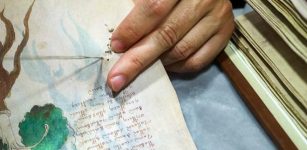 Enigmatic Voynich Manuscript: Computer Scientists From Alberta Use AI To Decipher Document
Archaeology | Jan 31, 2018
Enigmatic Voynich Manuscript: Computer Scientists From Alberta Use AI To Decipher Document
Archaeology | Jan 31, 2018 -
 Amage: Sarmatian Warrior Queen/Regent Who Impressed With Remarkable Military Skills
Featured Stories | May 23, 2023
Amage: Sarmatian Warrior Queen/Regent Who Impressed With Remarkable Military Skills
Featured Stories | May 23, 2023 -
 10 Surprising Facts About The Neanderthals Who Were Not As Primitive As Previously Thought
Ancient History Facts | May 6, 2017
10 Surprising Facts About The Neanderthals Who Were Not As Primitive As Previously Thought
Ancient History Facts | May 6, 2017 -
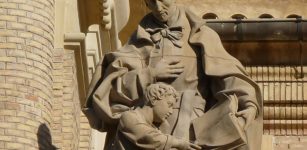 On This Day In History: First Public And Free School Opened For Poor Children – On Sep 15, 1616
News | Sep 15, 2016
On This Day In History: First Public And Free School Opened For Poor Children – On Sep 15, 1616
News | Sep 15, 2016 -
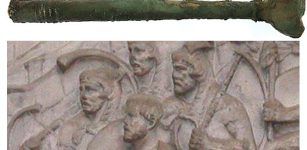 Vindolanda Treasures: Rare Roman Cornu Mouthpiece – Instrument of War – Uncovered
Archaeology | Sep 24, 2022
Vindolanda Treasures: Rare Roman Cornu Mouthpiece – Instrument of War – Uncovered
Archaeology | Sep 24, 2022 -
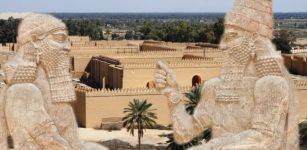 Mysterious Death Of Cambyses II – Natural, Suicide Or Assassination By Darius I The Great?
Featured Stories | Apr 21, 2021
Mysterious Death Of Cambyses II – Natural, Suicide Or Assassination By Darius I The Great?
Featured Stories | Apr 21, 2021 -
 Archaeological Evidence Amazon Warrior Women Did Exist Found At Nakhchivan Necropolis, Azerbaijan
Archaeology | Mar 27, 2024
Archaeological Evidence Amazon Warrior Women Did Exist Found At Nakhchivan Necropolis, Azerbaijan
Archaeology | Mar 27, 2024 -
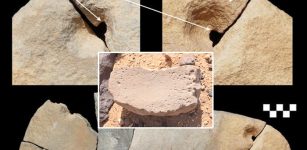 Study: Grinding Tools Were Once Used In Plant, Pigment And Bone Processing At Jebel Oraf Site, Saudi Arabia
Archaeology | Oct 6, 2023
Study: Grinding Tools Were Once Used In Plant, Pigment And Bone Processing At Jebel Oraf Site, Saudi Arabia
Archaeology | Oct 6, 2023 -
 On This Day In History: Samuel F.B. Morse Receives A Patent For His Dot-Dash Telegraphy Signals – On June 20, 1840
News | Jun 20, 2016
On This Day In History: Samuel F.B. Morse Receives A Patent For His Dot-Dash Telegraphy Signals – On June 20, 1840
News | Jun 20, 2016 -
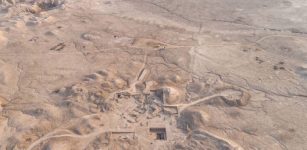 4,500-Year-Old Sumerian Palace Discovered In The Ancient City Of Girsu
Archaeology | Feb 20, 2023
4,500-Year-Old Sumerian Palace Discovered In The Ancient City Of Girsu
Archaeology | Feb 20, 2023 -
 Inchbrayock Stone: Pictish Samson Stone Carved With Biblical Symbols And Scenes
Artifacts | Jan 21, 2019
Inchbrayock Stone: Pictish Samson Stone Carved With Biblical Symbols And Scenes
Artifacts | Jan 21, 2019 -
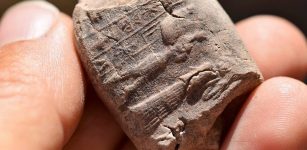 Old Babylonian Residential Building In Ur Dated To 1835 BC – Investigated
Archaeology | Jul 24, 2019
Old Babylonian Residential Building In Ur Dated To 1835 BC – Investigated
Archaeology | Jul 24, 2019 -
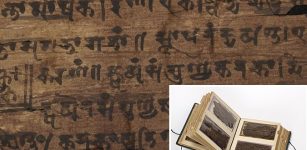 Ancient Indian Text Re-Writes History Of Number Zero And Mathematics
Archaeology | Sep 15, 2017
Ancient Indian Text Re-Writes History Of Number Zero And Mathematics
Archaeology | Sep 15, 2017 -
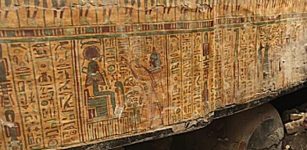 At Least 20 Ancient Colored Wooden Coffins Discovered In Asasif Necropolis, Luxor
Archaeology | Oct 15, 2019
At Least 20 Ancient Colored Wooden Coffins Discovered In Asasif Necropolis, Luxor
Archaeology | Oct 15, 2019 -
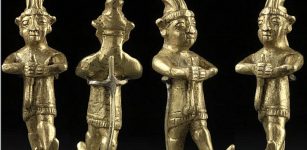 Golden Figurine From Yozgat Depicts Unknown Hittite God
Artifacts | May 11, 2016
Golden Figurine From Yozgat Depicts Unknown Hittite God
Artifacts | May 11, 2016 -
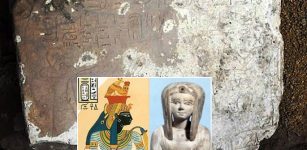 Limestone Stela Of Liberation Discovered In Kom Ombo Temple In Aswan, Egypt
Archaeology | Oct 17, 2018
Limestone Stela Of Liberation Discovered In Kom Ombo Temple In Aswan, Egypt
Archaeology | Oct 17, 2018


